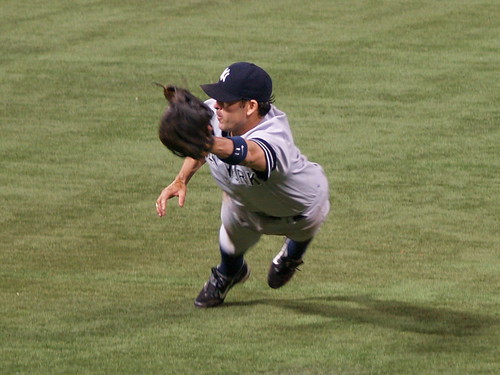If I am fortunate enough to have kids one day, this is one of the stories I’ll tell them about the first year the Minnesota Twins played at Target Field.
Back in 2010, kids, we had a lot to look forward to in Twins Territory. We had a brand-spankin’-new ballpark, we had signed a few new players during the offseason who looked full of promise for the best lineup we had seen for a while, and our hometown hero Joe Mauer signed a long-term contract during spring training. But when we learned that our closer, Joe Nathan, would be out for the season, it was like a little black cloud settled over the bullpen, bringing uncertainty, debate, speculation, and perhaps even a little fear among Twins fans everywhere as we wondered who could save the day in Twitchy’s place. We had become used to what he brought to our team, used to his entrance music, used to seeing number 36 come in at the end to close out games.
At first we were told it would be “closer by committee,” but soon we learned that Jon Rauch would be given the opportunity to prove himself as our closer for the season. I didn’t know much about this guy, except that he was the tallest player in the history of major league baseball, at 6’11”. And that he had a lot of tattoos. As it happened, he had a couple of feats to his name before coming to the Twins in August of 2009. While playing with the Expos/Nationals, he became the tallest player to hit a home run (against Roger Clemens in 2004), and he was the first pitcher credited with a win at Nationals Park (March 30, 2008).
Now, no pitcher is perfect, and in his first 13 save opportunities, Rauch had a couple of blown saves (one of which I was at Target Field for), but one (the other one) ended up being a win for him, similar to that first game at Nationals Park actually, so it wasn’t so bad. I can’t speak for other Twins fans, but by the end of May that year, any fears I might have had about our closing situation had disappeared. I even started considering downloading his entrance music (“Wherever I May Roam,” by Metallica, which was also his music when he was the closer for the Nationals in the injured Chad Cordero’s place in the first half of 2008) from iTunes, despite never really being a fan of metal.
It’s possible the guy was a just a good pitcher, but I’m pretty sure that much of his success was because when he came to the mound, the opposing hitters’ bats simply trembled at the sight of him. That’s my story, anyway.
















